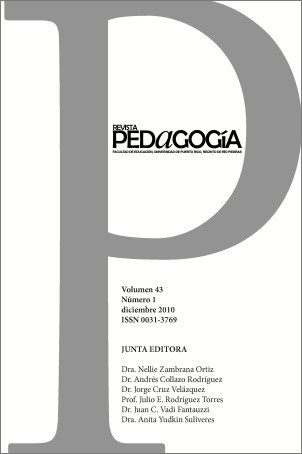Résumé
Este trabajo resume la evidencia recopilada desde los años 1970 en contra de la enseñanza de algoritmos en escuela primaria, con el propósito de promover la idea contraria: que hay que estimular a los niños a aplicar sus propios procedimientos mentales en la solución de problemas aritméticos, para así fomentar la construcción de conocimiento. Las autoras demostraron los efectos perjudiciales que tiene enseñar mecánicamente a los niños de nivel elemental conceptos como "llevar" y "tomar prestado". Estas observaron y documentaron que niños de segundo, tercero y cuarto grados inventan procedimientos para sumar, por ejemplo, 7 + 52 + 186, y obtienen respuestas correctas más frecuentemente que aquellos a quienes se les había enseñado mediante algoritmos. Las respuestas incorrectas de los alumnos que no usaron algortimos fueron más razonables (e.i. 235) que las de aquellos a quienes se les enseñaron los algoritmos (e.i., 989 y 29). Concluyeron que enseñar estas reglas es perjudicial para la mayoría de los niños porque (a) los desanima a pensar por ellos mismos y (b) no enseña apropiadamente el concepto de valor posicional del dígito.
Cómo citar:
Kamii, C., & Dominick, A. (2011). Los efectos negativos de enseñar algoritmos en grados primarios (1ro al 4to). (Trad. N. Zambrana). Pedagogía, 43(1), 59-73. Recuperado a partir de https://revistas.upr.edu/index.php/educacion/article/view/16574
Références
Ashlock, R.B. (1982). Error patterns in computation. Columbus, OH: Charles E. Merrill Publishing.
Brown, J.S., & Burton, R.R. (1978). Diagnostic models for procedural bugs in basic mathematical skills. Cognitive Science, 2, 155-192.
Burns, M. (1994). Arithmetic: The last holdout. Phi Delta Kappan, 75, 471-476.
Carraher, T.N., Carraher, D.W., & Schliemann, A.D. (1985). Mathematics in the streets and in school. British Journal of Developmental Psychology, 3, 21-29.
Carraher, T., & Schliemann, A.D. (1985). Computation routines prescribed by schools: Help or Hindrance? Journal for Research in Mathematics Education, 16, 37-44.
Cochran, B. S., Barson, A., & Davis, R.B. (1970). Child-created mathematics. Arithmetic Teacher, 17, 211-15.
Dominick, A.M. (1991). Third graders‘ understanding of the multidigit subtraction algorithm (Unpublished doctoral dissertation). Tennessee: Vanderbilt University.
Ferreiro, E. (1988). Alfabetizacāo em processo. Sāo Paulo: Cortez.
Groza, V.S. (1968). A survey of mathemathics: Elementary concepts and their historical development. New York: Holt, Rinehart & Winston.
Jones, D.A. (1975, May). Don‘t just mark the answer – Have a look at the method! Mathematics in School, 4, 29-31.
Kamii, C. (1985). Young children reinvent arithmetic. New York: Teachers College Press.
Kamii, C. (1989a). Double-digit addition: A teacher uses Piaget‘s theory (videotape). New York: Teachers College Press.
Kamii, C. (1989b). Young children continue to reinvent arithmetic, 2nd grade. New York: Teachers College Press.
Kamii, C. (1994). Young children continue to reinvent arithmetic, 3rd grade. New York: Teachers College Press.
Leinwand, S. (1994, February). It‘s time to abandon computational algorithms. Education Week, 9, 36.
Madell, R. (1985). Children‘s natural processes. Arithmetic Teacher, 32, 20-22.
Murray, H., & Olivier, A. (1989). A model of understanding two-digit numeration and computation. In G. Vergnaud, J. Rogalski, & M. Artigue (Eds), Proceedings of the Thirteenth Meeting of the International Group for the Psychology of Mathematics Education (pp. 3-10). Paris: Laboratoire PSYDEE of the National Center of Scientific Research.
Narode, R., Board, J., & Davenport, L. (1993). Algorithms supplant understanding: Case studies of primary student‘s strategies for double-digit addition and subtraction. In J. Rossi Becker, & B. J. Pence (Eds.), Proceedings of the Fifteenth Annual Meeting, North American Chapter of the International Group for the Psychology of Mathematics Education, Vol. 1 (pp. 254-60). CA: San Jose State University, Center for Mathematics and Computer Science Education.
Plunkett, S. (1979). Decomposition and all that rot. Mathematics in School, 8(3), 2-7.
ter Heege, H. (1978). Testing the maturity for learning the algorithm of multiplication. Educational Studies in Mathematics, 9, 75-83.
Vakali, M. (1984). Children‘s thinking in arithmetic word problem solving. Journal of Experimental Education, 53, 106-13.
El contenido que aparece en la Revista de Educación de Puerto Rico se distribuye gratuitamente y está disponible bajo las prácticas de acceso abierto, de acuerdo con la licencia de Creative Commons, Atribución-NoComercial 4.0 Internacional (CC BY-NC 4.0). Mediante estos principios, la revista y sus autores permiten a los lectores acceder, reproducir y compartir los textos completos de los artículos. Los usuarios deben dar crédito a los autores de forma razonable sin sugerir que tienen el apoyo de ellos. Bajo ninguna circunstancia, los lectores pueden hacer uso de los contenidos con propósitos comerciales. Los autores conservan los derechos de autor sobre sus trabajos.

